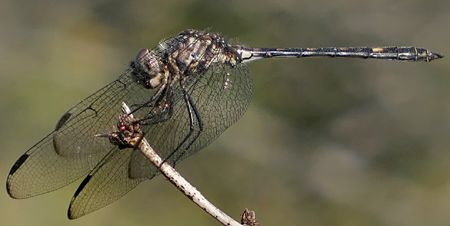
Dythemis velox (swift setwing)
| The characteristic wing position that gives setwings their common name is quite obvious in this photo, but the insects don't always perch so perfectly. When approached, they often make a quick motion to "reset" their wings just a bit more forward, as if they are getting nervous. |

Enallagma basidens (double-striped bluet)

Leptogenys elongata (ant drone)
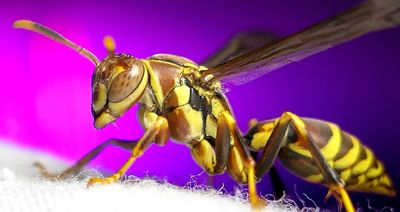
Polistes exclamans (paper wasp)
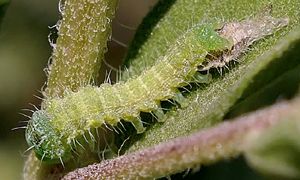
Schinia gracilenta (slender flower moth larva)
| Caterpillars are soft and flexible but they are still covered with an exoskeleton that must be shed as they grow. The individual shown above has just walked out of its old skin (the tan glob at right). The head capsule is already at the new, larger size; as the larva eats, the body will expand to match it. |
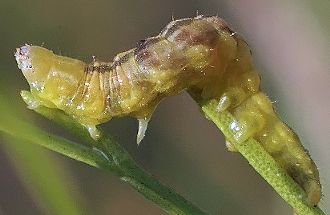
Schinia chrysellus (broomweed flower moth larva)
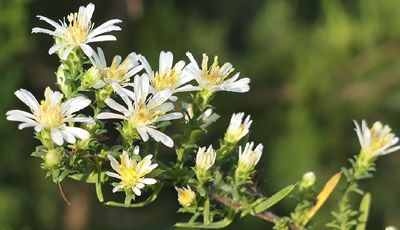
Symphyotrichum ericoides (white heath aster)
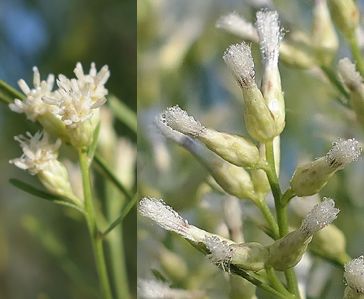
Baccharis neglecta (povertyweed: male & female)
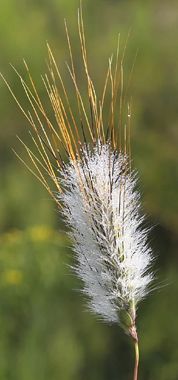
Dichanthium sericeum (silky bluestem)
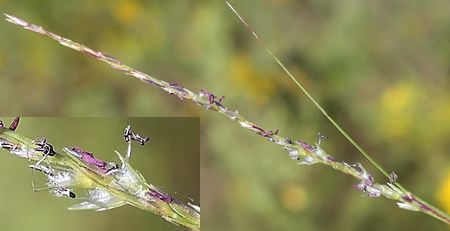
Sporobolus neglectus (small dropseed)
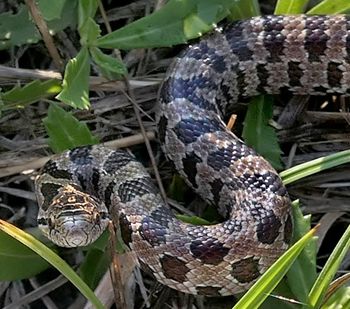
Lampropeltis calligaster calligaster (prairie kingsnake)
| This secretive snake is rarely observed out in the open, so an early morning encounter was a real stroke of luck. It is a constrictor that prefers warm-blooded prey but will also consume reptiles and amphibians, often hunting at night and otherwise hiding under rocks, logs, grass clumps or in rodent burrows. |

Atalopedes campestris (sachem)
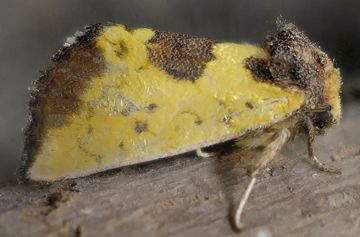
Stiria intermixta (moth)
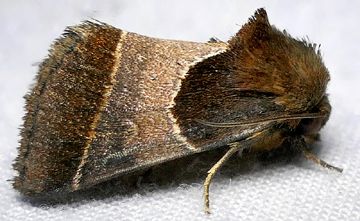
Schinia arcigera (arcigera flower moth)
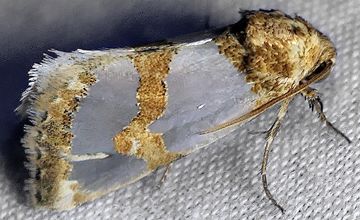
Schinia chrysellus (broomweed flower moth)
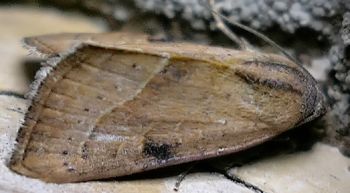
Galgula partita (the wedgling)

Magusa divaricata (orbed narrow-wing)
| Insects are usually at the mercy of the ambient temperature, but some can warm their flight muscles to a functional level by shivering. The moth shown above vibrated for about a minute before it could lift off. |
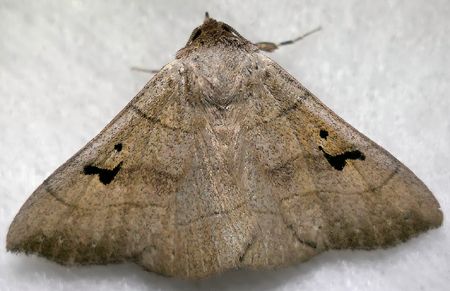
Panopoda carneicosta (brown panopoda)
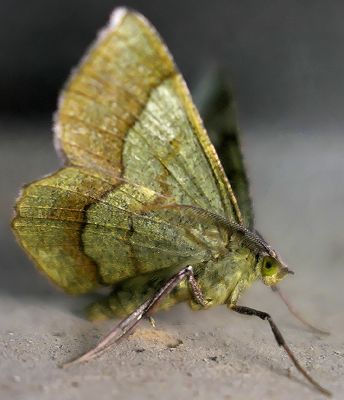
Erastria decrepitaria (moth)
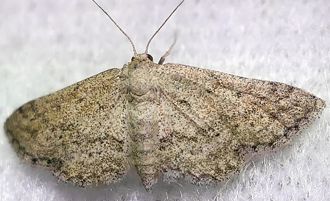
Lobocleta ossularia (drab brown wave)
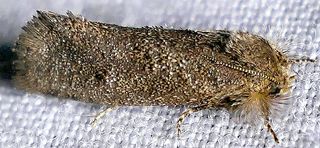
Acrolophus heppneri (tubeworm moth)

Elophila obliteralis (waterlily leafcutter moth)
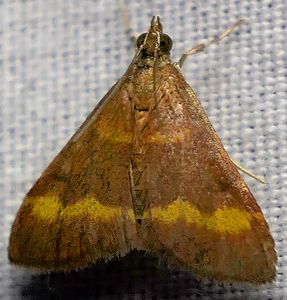
Pyrausta pseuderosnealis (pyrausta moth)
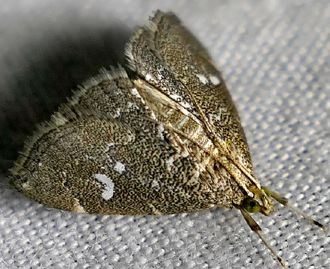
Nephrogramma reniculalis (kidney moth)

Fissicrambus sp. (grass-veneer moth)
| Many small moths that roll their wings and rest immobile on thin stems are called "grass-veneer moths." While it is difficult to distinguish between such members of the families Crambidae and Pyralidae, one trick is to recall that crambids "cram" their face downwards (see above) while pyralids lift their heads to "peer" upwards (next photo). |

Peoria opacella (grass-veneer moth)

Tacoma feriella (moth)

Honora mellinella (moth)
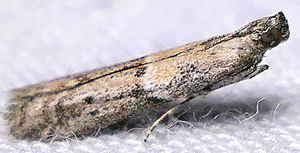
Ephestiodes gilvescentella (dusky raisin moth)
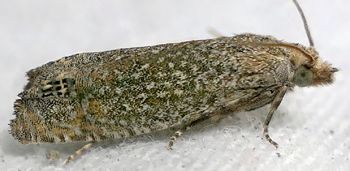
Eucosma glomerana (leafroller moth)

Eumarozia malachitana (sculptured moth)

Coleophora sp. (moth)

Anacampsis fullonella (moth)
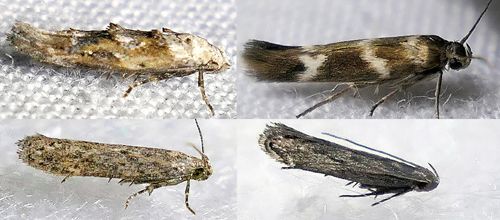
some very small moths
top left: momphidae, Mompha murtfeldtella
top right: scythrididae, Scythris trivinctella (banded scythris moth)
bottom left: gelechiidae, Keiferia glochinella (eggplant leafminer moth)
bottom right: gelechidae, Untomia albistrigella |

caddisflies representing five families
top left: philopotamidae, Chimarra sp. (black caddisfly)
top right: hydropsychidae, Hydropsyche sp. (netspinning caddisfly)
bottom left: leptoceridae, Oecetis sp. (long-horned caddisfly)
bottom right upper: glossosomatidae, Unknown sp. (saddle casemaker caddisfly)
bottom right lower: hydroptilidae, Unknown sp. (microcaddisfly) |
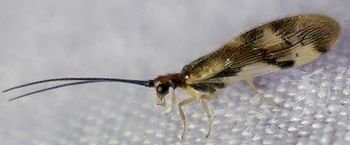
Climacia areolaris (spongillafly)
| Related to lacewings and antlions, spongillaflies are unusual neuropterans with aquatic larvae that feed on freshwater sponges. The adults forage on nectar, pollen, aphids and fungi. |
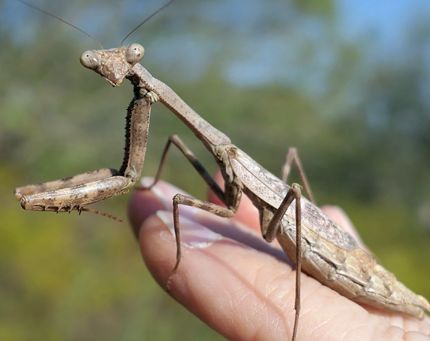
Stagmomantis carolina (Carolina mantis, female)
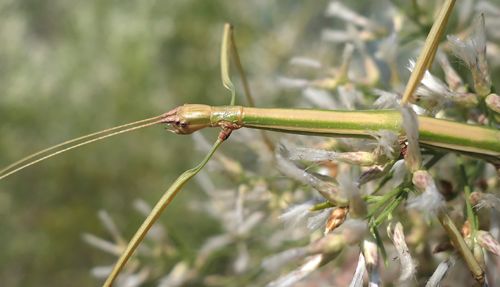
Diapheromera velii (prairie walkingstick, female)
| Mantids look very different from both walkingsticks and grasshoppers, and are currently placed in separate orders. But at one time, due to some shared characteristics such as incomplete metamorphosis, chewing mouthparts and prominent cerci (rear-end appendages), all these insects were lumped into Orthoptera, along with cockroaches, termites and earwigs. |
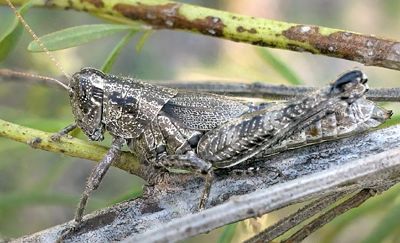
Campylacantha olivacea (fuzzy olive-green grasshopper)
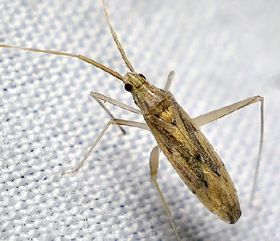
Phytocoris sp. (plant bug)

Tropisternus collaris (water scavenger beetle)
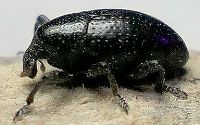
Tyloderma baridium (weevil)
| Sometimes a seemingly incomprehensible Latin binomial actually provides clues about the organism, albeit rather abstrusely. In the case of this beetle, I would posit that the species name refers to an unrelated subfamily, Baridinae, which includes weevils that look superficially similar (shiny, black, very small) to this one. |
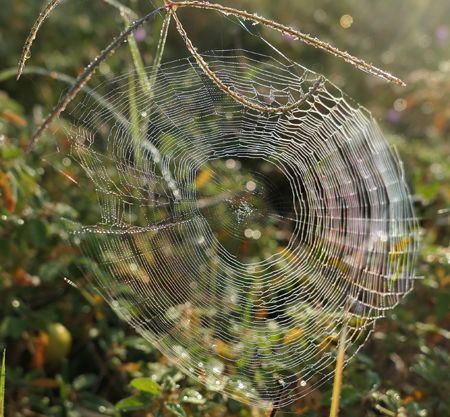
Mangora sp. (orbweaver web)
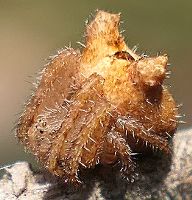
Kaira alba (frilled orbweaver)
| This unusual orbweaver does not build the typical spiral web. It hunts by releasing an odor that mimics the pheromones of female moths and preys upon the male moths that approach. These spiders are not commonly seen or collected and their true abundance and range are poorly understood. |
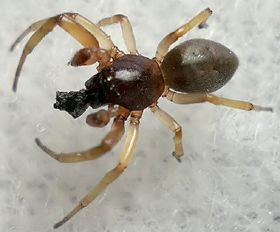
Trachelas sp. (spider)
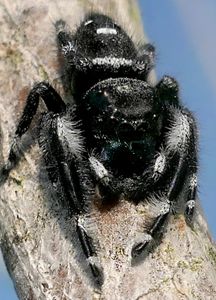
Phidippus audax (bold jumper, male)
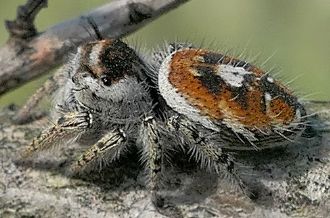
Phidippus arizonensis (Arizona jumper, female)

Phidippus cardinalis (cardinal jumper, male)
| Jumping spiders have perhaps the best eyesight of any arthropod (note the large central pair of eyes on the individual pictured above), a definite asset for an active predator. The crab spider shown below, on the other hand, is an ambush hunter. With relatively weak vision, it responds to touch, and can catch prey day or night. |
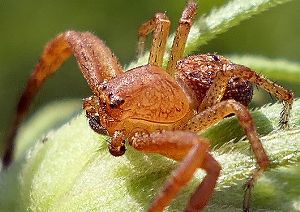
Xysticus sp. (crab spider)

![]()